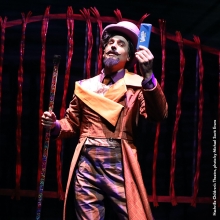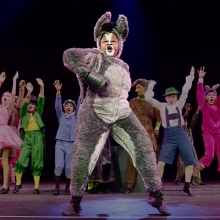What steps do I need to take to integrate digital scenery into my production?
1. Give yourself some time with the projection content away from the stage.
Scenic ProjectionsTM packages are uniquely aligned to your script: each image or video segment is tied to a specific cue line. This makes integration of digital scenery into your production incredibly simple. Scenic ProjectionsTM packages are customizable and include many cue options to select from to produce the perfect scenery for your show - these can be something as simple as a lighting change or the sun setting.
If you decide that a certain element is best omitted to match your artistic vision, it is easy to exclude it .We recommend that you take full advantage of the provided pre-production rehearsal materials and give yourself the time necessary to really look through everything. For best results, we suggest going through the script and digital scenery content side by side, deciding where you want each moment to happen along the way.
2. Consider the integration of other production elements, like costume design, lights and makeup.
When going through the content, whether you have already purchased or are pursuing, make sure you think about the costumes, lights, makeup, and everything else you have already incorporated into your production design.
3. Expand your knowledge! Scenic Projections are a great tool to learn more about the newest development in theatrical production design. Remember: being “in theatre” isn’t limited to acting, singing and dancing!
Creating a world in which the action takes place is just as vital as portraying a character, and with experiences ranging from costume design to carpentry, utilizing Scenic Projections in your production offers another exciting technical avenue to explore and understand. Broadway Media provides a variety of resources and world-class projection experts to get you started – get in touch[email link to aus@broadwaymedia.comlink to BMD]!
4. Give your cast the chance to see it before tech.
It is customary to educate your cast on the inner-workings of a traditional set, as to make sure everyone knows where the entrances and exits are located. The same rule applies to digital scenery, where it may be even more important to help your cast know where each animated transition or magical moment occurs. To avoid confusion, make sure your cast is familiar with the projections with plenty of time before performances.
























